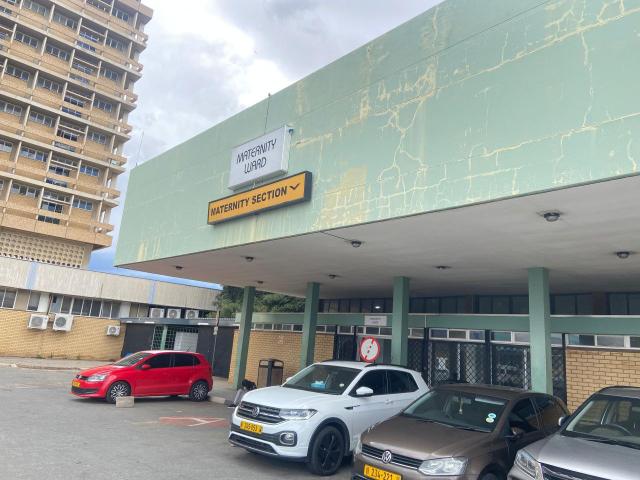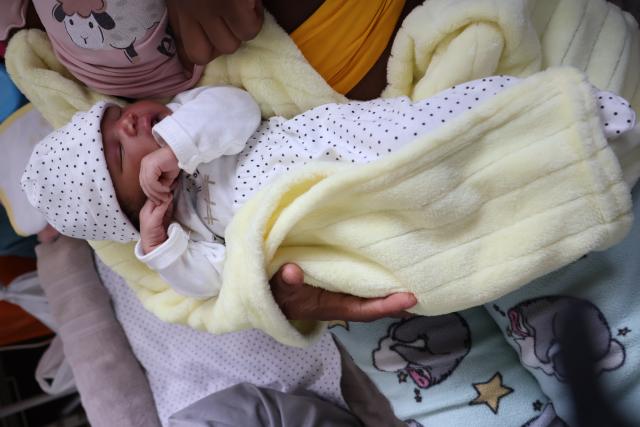
WINDHOEK, 26 December 2025 - The Katutura State Hospital maternity ward. (Photo by: Edward Tenete) NAMPA

OTJIWARONGO, 26 December 2025 - A newly born baby girl at the Otjiwarongo State Hospital on Christmas Day. Otjiwarongo recorded two births of Christmas babies this year. (Photo by: Mulisa Simiyasa) NAMPA

KATIMA MULILO, 25 December 2025 - Sister Emely Chidolo speaks to Nampa while 19-year-old first-time mother, Emelia Kachelo takes a recuperation nap on her hospital bed on Thursday afternoon. (Photo by: Michael Mutonga Liswaniso) NAMPA

Salome Kambala, acting national spokesperson of the National Organisation of Parents in Education (NAOPE). (Photo: Contributed)

Okatana Constituency councillor Petrus Shigwedha Ashipala. (Photo: Contributed)

ONTINDA - A Top Teenagers FC player in action. (Photo: Contributed)

GROOTFONTEIN, 19 December 2025 - The accident scene where two trucks and a passenger bus were involved in a collision Friday afternoon outside Grootfontein in the Otjozondjupa Region. (Photo: Contributed)

The Communications Regulatory Authority of Namibia (CRAN) Board of Directors chairperson, Tulimevava Mufeti. (Photo: Contributed)

RAAL La Louviere's Spanish defender #19 Dario Benavides and OH Leuven's Belgian-French forward #07 Thibaud Verlinden fight for the ball during the Belgian "Pro League" First Division football match between Royale Association Athletique Louvierois and Oud-Heverlee Leuven at the Easi Arena in La Louviere on December 27, 2025. (Photo by VIRGINIE LEFOUR / BELGA / AFP) / Belgium OUT

RAAL La Louviere's Senegalese forward #07 Pape Moussa Fall reacts during the Belgian "Pro League" First Division football match between Royale Association Athletique Louvierois and Oud-Heverlee Leuven at the Easi Arena in La Louviere on December 27, 2025. (Photo by VIRGINIE LEFOUR / BELGA / AFP) / Belgium OUT

OH Leuven's Spanish defender #27 Oscar Gil (L) and RAAL La Louviere's Ghanaian forward #22 Jerry Afriyie fight for the ball during the Belgian "Pro League" First Division football match between Royale Association Athletique Louvierois and Oud-Heverlee Leuven at the Easi Arena in La Louviere on December 27, 2025. (Photo by VIRGINIE LEFOUR / BELGA / AFP) / Belgium OUT

EDITORS NOTE: Graphic content / This photograph taken in Paris on December 27, 2025 shows the logo of "Little Sex Dolls" website, a site vending sex dolls online. France has opened an investigation into a British e-commerce site suspected of selling sex dolls with childlike features, Paris prosecutors told AFP on December 26, 2025. (Photo by Anna KURTH / AFP)

EDITORS NOTE: Graphic content / This photograph taken in Paris on December 27, 2025 shows the "Little Sex Dolls" website, a site vending sex dolls online. France has opened an investigation into a British e-commerce site suspected of selling sex dolls with childlike features, Paris prosecutors told AFP on December 26, 2025. (Photo by Anna KURTH / AFP)

EDITORS NOTE: Graphic content / This photograph taken in Paris on December 27, 2025 shows the "Little Sex Dolls" website, a site vending sex dolls online. France has opened an investigation into a British e-commerce site suspected of selling sex dolls with childlike features, Paris prosecutors told AFP on December 26, 2025. (Photo by Anna KURTH / AFP)

EDITORS NOTE: Graphic content / This photograph taken in Paris on December 27, 2025 shows the "Little Sex Dolls" website, a site vending sex dolls online. France has opened an investigation into a British e-commerce site suspected of selling sex dolls with childlike features, Paris prosecutors told AFP on December 26, 2025. (Photo by Anna KURTH / AFP)

EDITORS NOTE: Graphic content / This photograph taken in Paris on December 27, 2025 shows the logo of "Little Sex Dolls" website, a site vending sex dolls online. France has opened an investigation into a British e-commerce site suspected of selling sex dolls with childlike features, Paris prosecutors told AFP on December 26, 2025. (Photo by Anna KURTH / AFP)